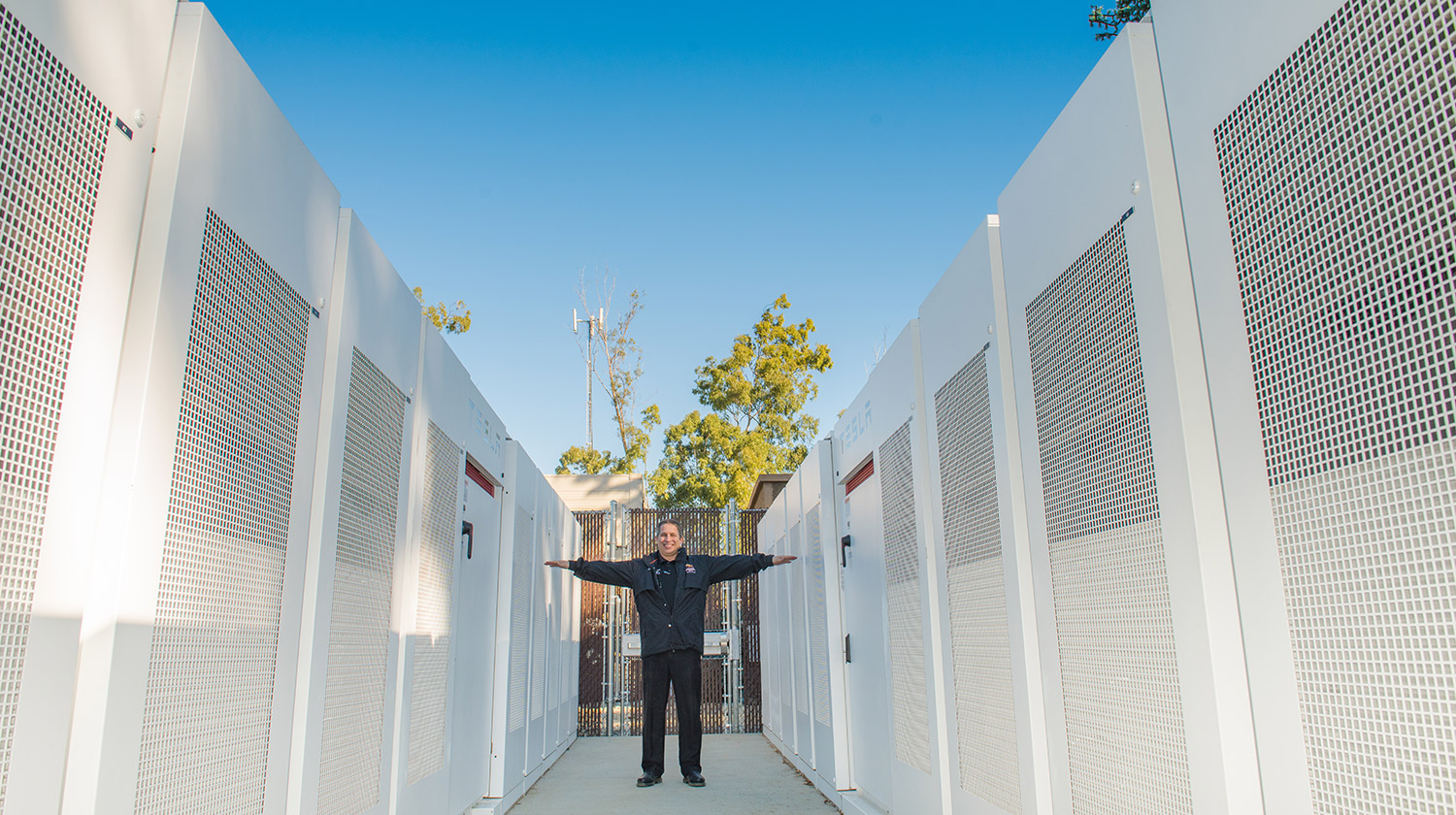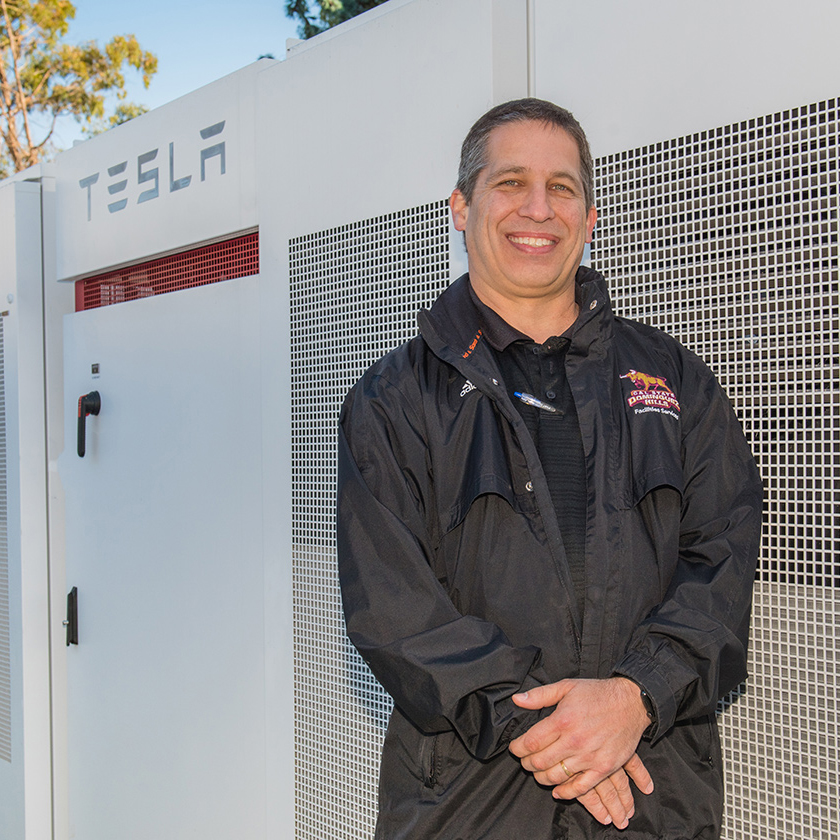
A new energy storage system on the California State University, Dominguez Hills (CSUDH) campus is reducing the university’s impact on the local power grid and making the campus more sustainable.
Twenty large Tesla battery banks installed on the campus in December 2017 went online at the beginning of the year, making CSUDH one of the first to participate in an innovative load relief program that combines artificial intelligence (AI)-energy storage and demand response.
 “We have a one-of-a-kind demand response system that nobody else is doing yet, which shows other universities and big players out there that Cal State Dominguez Hills is paving the way in energy efficiency technology,” said Kenny Seeton, Central Plant/energy manager at CSUDH. “Research entities want to do business with a university that’s forward thinking, and students want to know they are attending a university that is implementing cutting-edge technology and sharing it with them.”
“We have a one-of-a-kind demand response system that nobody else is doing yet, which shows other universities and big players out there that Cal State Dominguez Hills is paving the way in energy efficiency technology,” said Kenny Seeton, Central Plant/energy manager at CSUDH. “Research entities want to do business with a university that’s forward thinking, and students want to know they are attending a university that is implementing cutting-edge technology and sharing it with them.”
For years, CSUDH has been working with the company CPower and its demand response (DR) program to help manage its electricity usage when the grid becomes overloaded, which is typically during the hot summer months. Normally the program runs from May through October.
However, the campus expanded its grid relief to all seasons when it partnered with Stem to join its AI-driven energy storage service network and built an installation to house 20 large Tesla battery banks on campus, which were paid for by Southern California Edison.
In February 2018 CSUDH was honored with the Onsite Renewable Energy Award at the 2018 Smart Energy Decisions Innovation Summit for its pioneering role in curtailing strain on the region’s power grid.
By partnering with CPower and Stem to stack their collective resources into what is called a “virtual power plant,” CSUDH’s batteries now intuitively kick on to reduce peak demand from the campus and provide far better grid relief via automated load reductions than what the university had in the past been able to do with just manual adjustments. Even with the ability to store energy, there are still thousands of calculations, forecasting simulations, and split-second decisions required to produce meaningful results. The AI system continually learns and adapts over time to optimize performance.
“We call it a virtual power plant since it steps in for the actual power grid,” said Seeton. “As the amount of customers who do this increases, the fewer actual power plants we’ll have to build. In fact, this was paid for through So Cal Edison’s Local Capacity Requirements incentive program, which was put in place when the San Onofre nuclear plant was shut down. Instead of spending billions of dollars to build a new power plant they invested in programs like these.”
The campus provides approximately 400kW of load reduction during a DR event, which combined with the 1000 kW Stem energy storage system, enables the campus to deliver up to 1,400 kW of load reductions, which is equivalent to powering nearly 175 homes.
During a peak power usage time, when the campus begins to exceed the target peak demand set by the AI system, the batteries begin discharging their power stores to the campus in order to avoid exceeding this target. On average, this will save CSUDH 5 to 10 percent on its monthly electric bill, and more than $60,000 annually.